Full text
PDF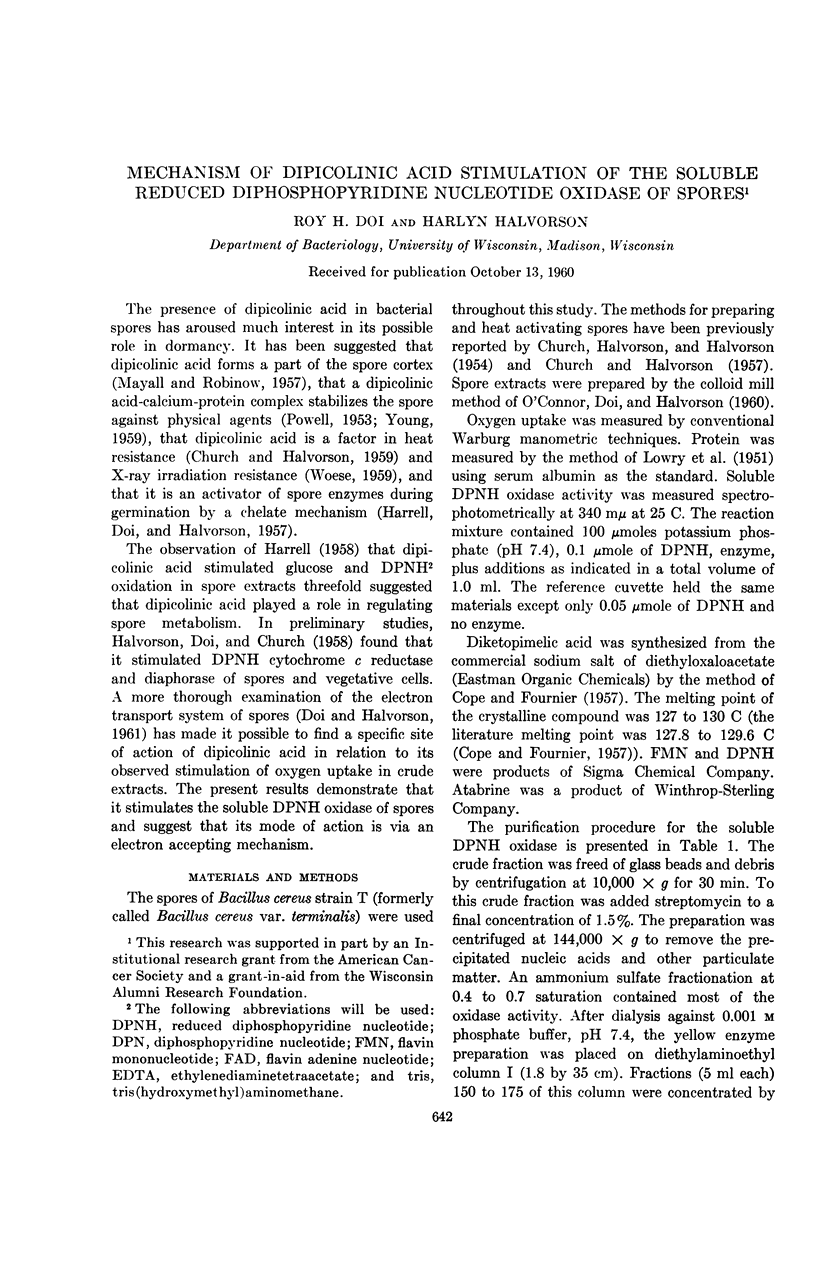
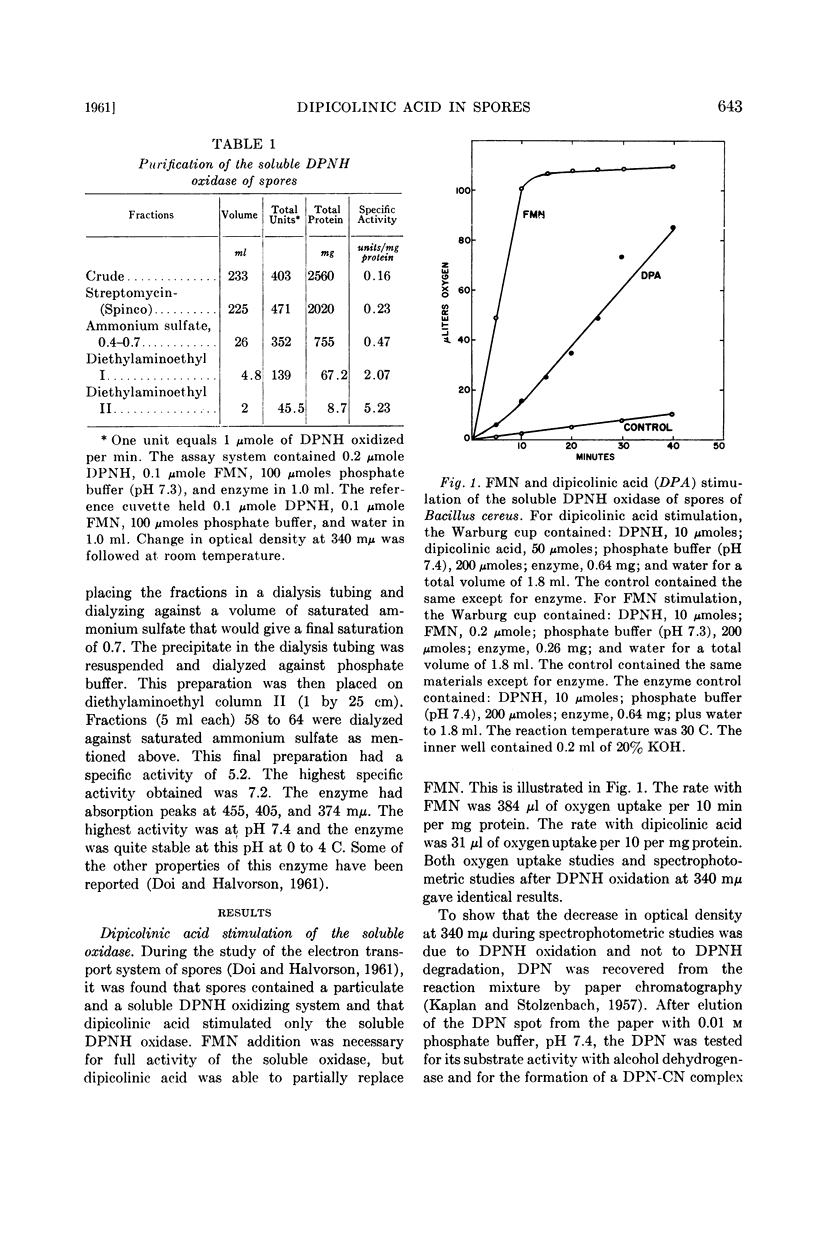
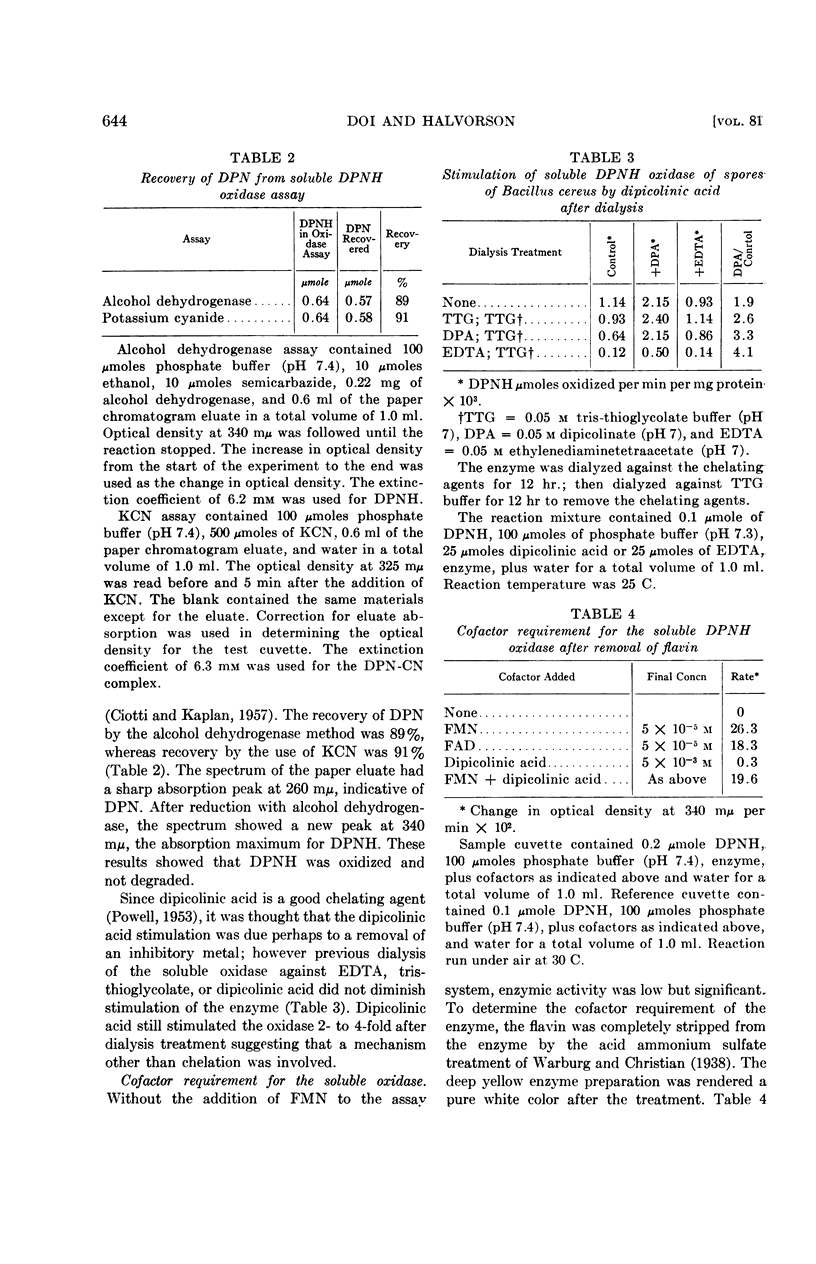
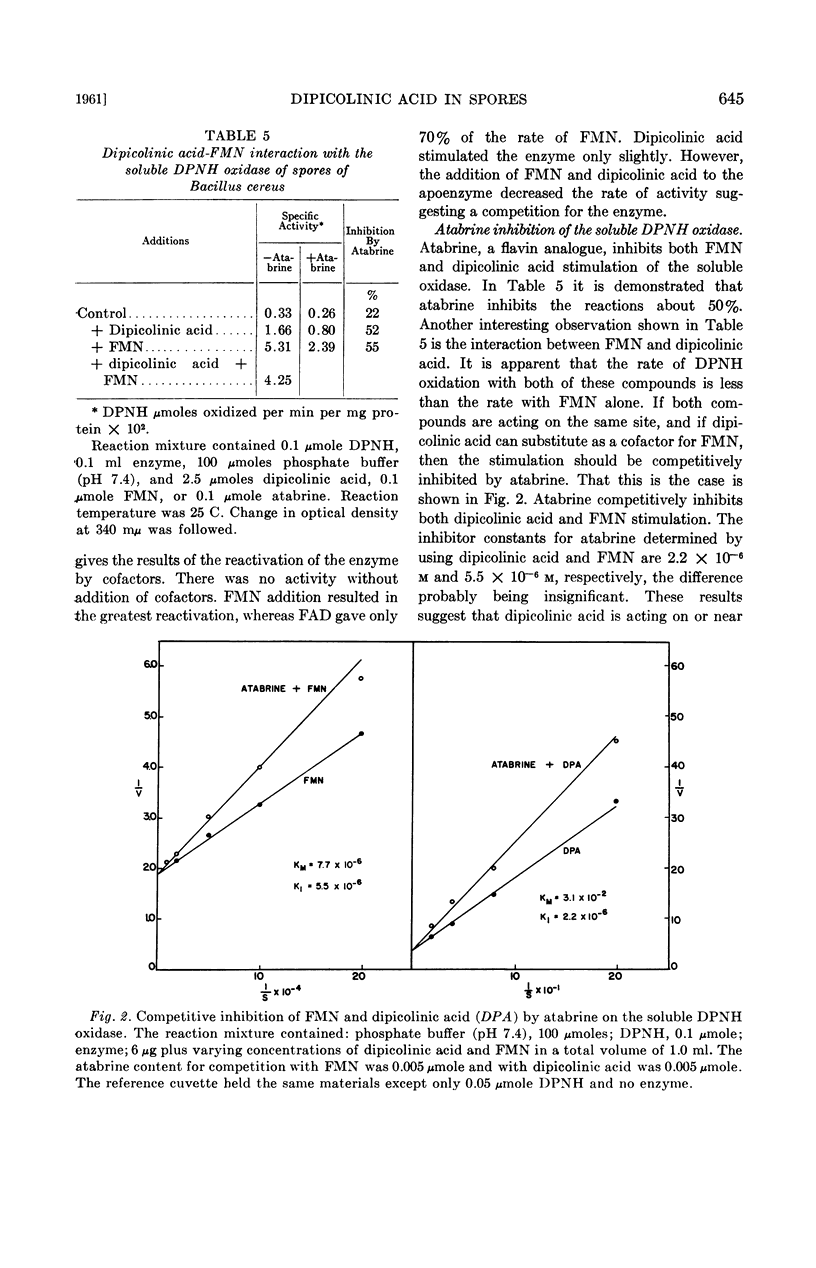
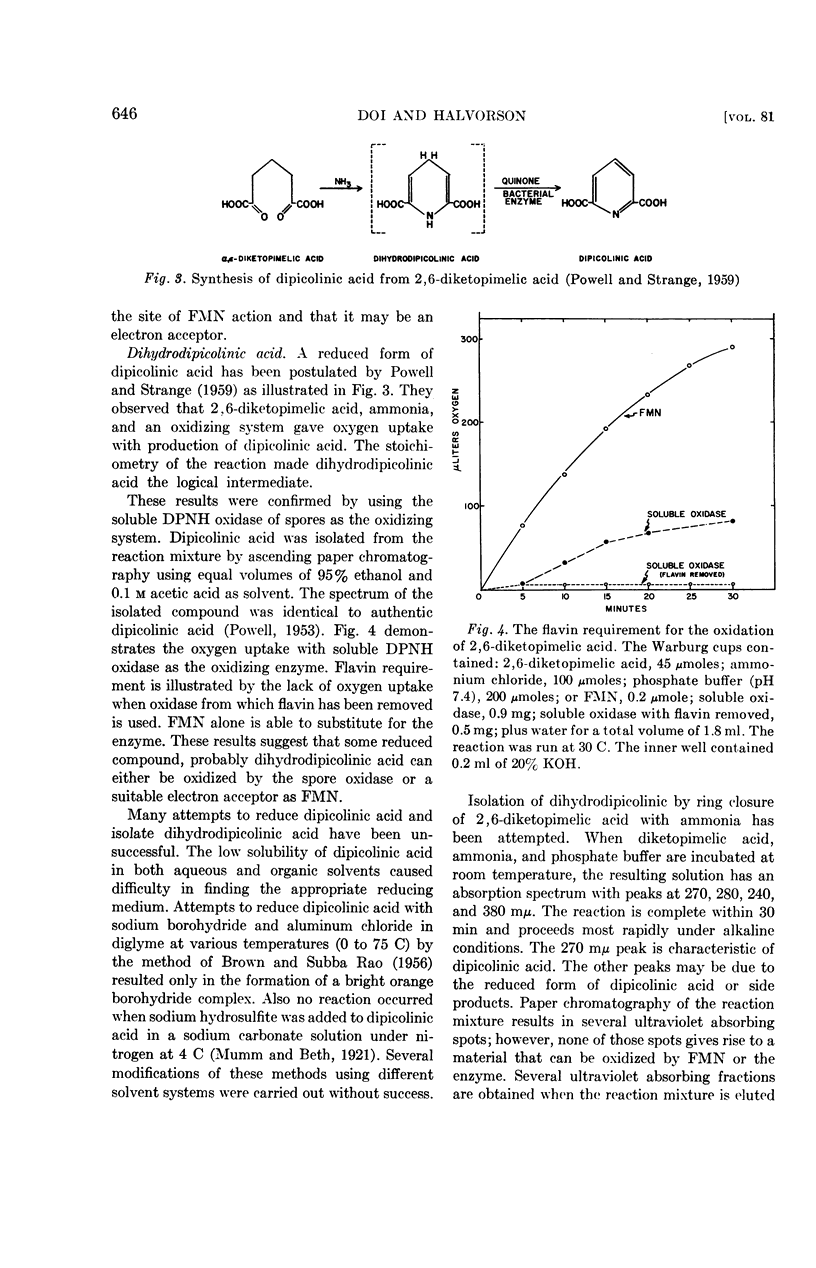
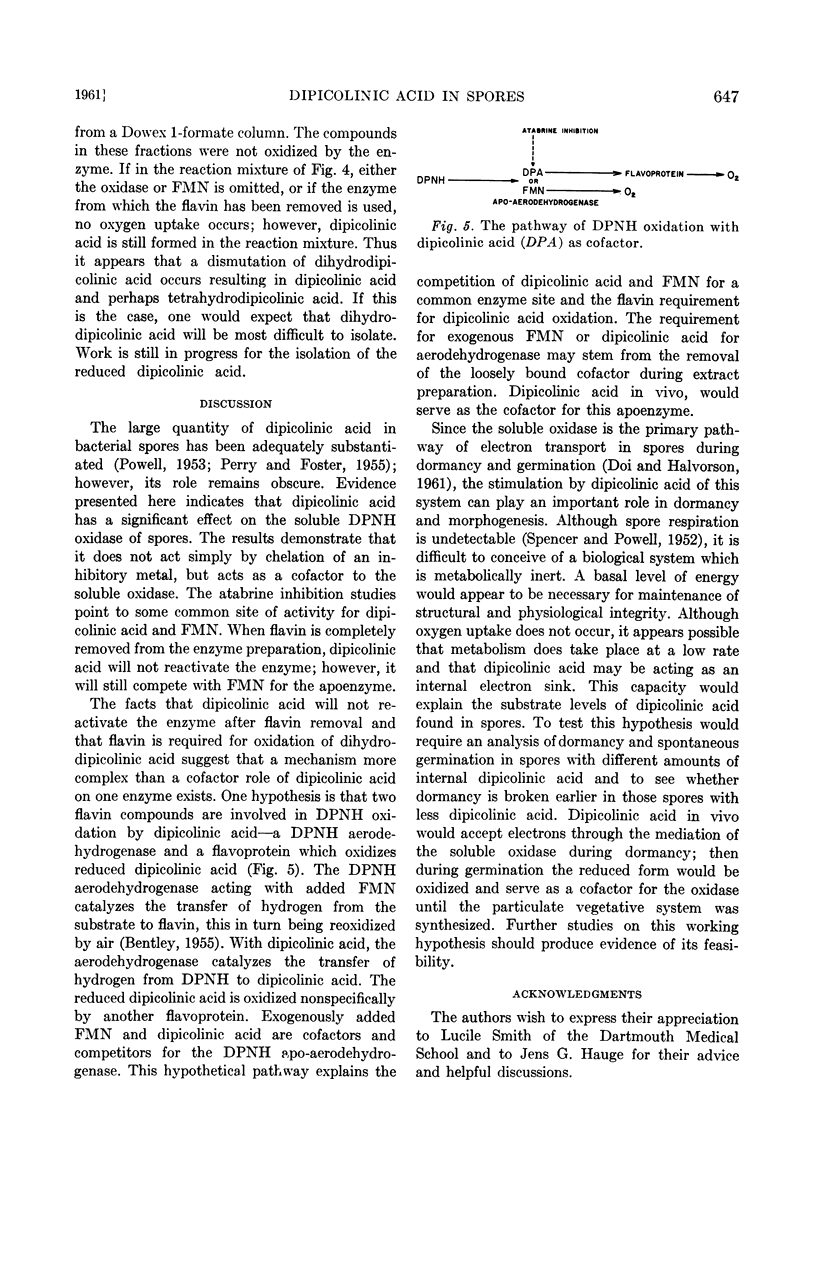
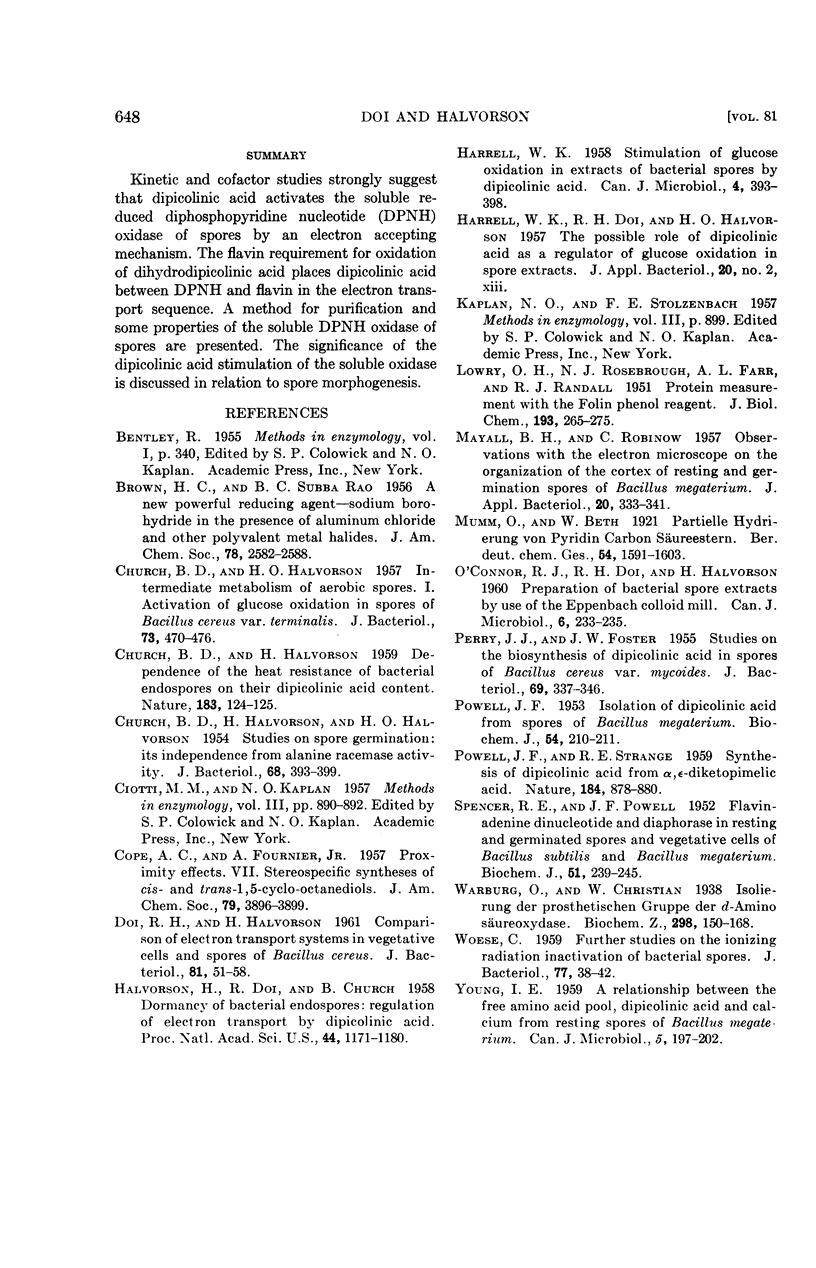
Selected References
These references are in PubMed. This may not be the complete list of references from this article.
- CHURCH B. D., HALVORSON H. Dependence of the heat resistance of bacterial endospores on their dipicolinic acid content. Nature. 1959 Jan 10;183(4654):124–125. doi: 10.1038/183124a0. [DOI] [PubMed] [Google Scholar]
- CHURCH B. D., HALVORSON H., HALVORSON H. O. Studies on spore germination: its independence from alanine racemase activity. J Bacteriol. 1954 Oct;68(4):393–399. doi: 10.1128/jb.68.4.393-399.1954. [DOI] [PMC free article] [PubMed] [Google Scholar]
- CHURCH B. D., HALVORSON H. Intermediate metabolism of aerobic spores. I. Activation of glucose oxidation in spores of Bacillus cereus var terminalis. J Bacteriol. 1957 Apr;73(4):470–476. doi: 10.1128/jb.73.4.470-476.1957. [DOI] [PMC free article] [PubMed] [Google Scholar]
- DOI R. H., HALVORSON H. Comparison of electron transport systems in vegetative cells and spores of Bacillus cereus. J Bacteriol. 1961 Jan;81:51–58. doi: 10.1128/jb.81.1.51-58.1961. [DOI] [PMC free article] [PubMed] [Google Scholar]
- HARRELL W. K. Stimulation of glucose oxidation in extracts of bacterial spores by dipicolinic acid. Can J Microbiol. 1958 Aug;4(4):393–398. doi: 10.1139/m58-041. [DOI] [PubMed] [Google Scholar]
- Halvorson H., Doi R., Church B. DORMANCY OF BACTERIAL ENDOSPORES: REGULATION OF ELECTRON TRANSPORT BY DIPICOLINIC ACID. Proc Natl Acad Sci U S A. 1958 Dec 15;44(12):1171–1180. doi: 10.1073/pnas.44.12.1171. [DOI] [PMC free article] [PubMed] [Google Scholar]
- LOWRY O. H., ROSEBROUGH N. J., FARR A. L., RANDALL R. J. Protein measurement with the Folin phenol reagent. J Biol Chem. 1951 Nov;193(1):265–275. [PubMed] [Google Scholar]
- PERRY J. J., FOSTER J. W. Studies on the biosynthesis of dipicolinic acid in spores of Bacillus cereus var. mycoides. J Bacteriol. 1955 Mar;69(3):337–346. doi: 10.1128/jb.69.3.337-346.1955. [DOI] [PMC free article] [PubMed] [Google Scholar]
- POWELL J. F. Isolation of dipicolinic acid (pyridine-2:6-dicarboxylic acid) from spores of Bacillus megatherium. Biochem J. 1953 May;54(2):210–211. doi: 10.1042/bj0540210. [DOI] [PMC free article] [PubMed] [Google Scholar]
- POWELL J. F., STRANGE R. E. Synthesis of dipicolinic acid from 2,6-diketopimelic acid. Nature. 1959 Sep 19;184:878–880. doi: 10.1038/184878a0. [DOI] [PubMed] [Google Scholar]
- SPENCER R. E. J., POWELL J. F. Flavinadenine dinucleotide and diaphorase in resting and germinated spores, and vegetative cells of Bacillus subtilis and Bacillus megatherium. Biochem J. 1952 May;51(2):239–245. doi: 10.1042/bj0510239. [DOI] [PMC free article] [PubMed] [Google Scholar]
- WOESE C. Further studies on the ionizing radiation inactivation of bacterial spores. J Bacteriol. 1959 Jan;77(1):38–42. doi: 10.1128/jb.77.1.38-42.1959. [DOI] [PMC free article] [PubMed] [Google Scholar]
- YOUNG I. E. A relationship between the free amino acid pool, dipicolinic acid, calcium from resting spores of Bacillus megaterium. Can J Microbiol. 1959 Apr;5(2):197–202. doi: 10.1139/m59-024. [DOI] [PubMed] [Google Scholar]


